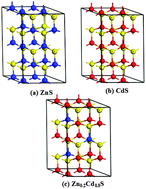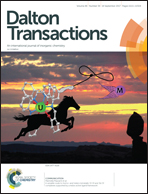Controllable synthesis of inorganic–organic Zn1−xCdxS-DETA solid solution nanoflowers and their enhanced visible-light photocatalytic hydrogen-production performance
Abstract
Sustainable photocatalytic hydrogen evolution (PHE) of water splitting has been utilized to solve the serious environmental pollution and energy shortage problems over the last decade. Inorganic–organic hybrid materials could combine the organic molecules and functional inorganic blocks into unique materials through complicated physical and chemical interactions. In this paper, diethylenetriamine (DETA) was used as an organic molecule template for the synthesis of inorganic–organic Zn1−xCdxS-DETA solid solution nanoflowers (NFs) at very low temperature. The obtained Zn0.2Cd0.8S-DETA NFs exhibited the highest H2 production rate (12 718 μmol g−1 h−1), which is 1.75 times as high as that of CdS-DETA. The suitable conduction band potential and excellent visible-light absorption of Zn0.2Cd0.8S-DETA solid solution NFs are closely related to the excellent PHE activity. Furthermore, the calculation on the electronic structure provides a new understanding of the band-gap shifts of the Zn1−xCdxS-DETA solid solution hybrids and the design of novel structural photocatalysts.



 Please wait while we load your content...
Please wait while we load your content...